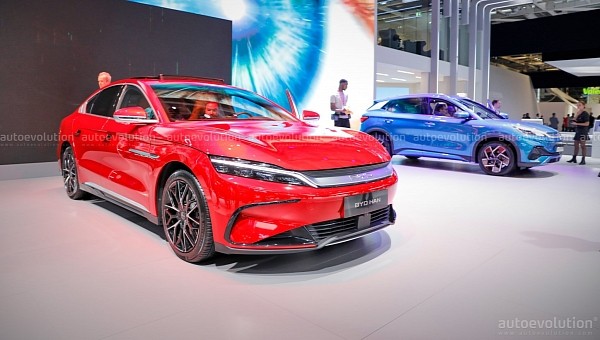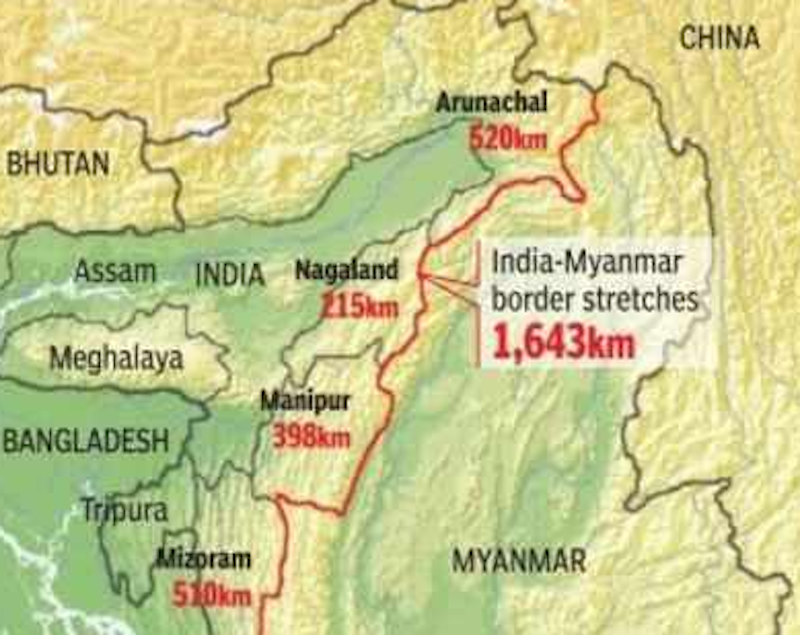BYD's Global Ambitions: Half Its Car Sales Outside China By 2030

Table of Contents
BYD, the Chinese automotive giant, has set an ambitious target: to achieve 50% of its car sales outside of China by 2030. This bold strategy signals a significant shift in the global automotive landscape and directly challenges established players like Tesla, Volkswagen, and Toyota. This article delves into BYD's ambitious plan, examining the factors contributing to its potential success and the significant challenges it faces in its quest for international dominance in the electric vehicle (EV) market.
BYD's Current Global Footprint and Market Penetration
Strong Existing Presence in Key Markets
BYD already boasts a strong presence in several key markets, laying a solid foundation for its ambitious global expansion. The company has strategically targeted regions with high EV adoption rates and supportive government policies.
-
Europe: BYD has seen significant success in Norway, establishing itself as a leading EV brand. Sales figures in other European countries like Germany, the Netherlands, and the UK are also growing steadily, with models like the BYD Atto 3 and Tang proving popular due to their competitive pricing and features. BYD’s market share in Norway consistently ranks among the top.
-
Southeast Asia: Countries like Thailand and Singapore have embraced BYD's electric vehicles. Successful launches and positive customer feedback indicate a strong potential for growth in this region, particularly as governments incentivize EV adoption.
-
Other Regions: BYD is also making inroads into other key markets such as Australia, Japan, and parts of South America, though its market share in these regions is currently lower.
Strategic Partnerships and Investments
BYD’s international growth isn't solely driven by organic expansion; strategic partnerships and investments play a crucial role.
-
Collaboration with distributors and dealers: BYD has formed strategic partnerships with established automotive distributors and dealers in various regions to facilitate sales and after-sales service. These partnerships leverage existing infrastructure and customer networks, accelerating market penetration.
-
Local manufacturing: Establishing local manufacturing facilities in key markets is a significant part of BYD’s strategy, reducing transportation costs and import duties while also boosting local economies and creating jobs.
-
Technology licensing: BYD has also explored licensing its battery and other core technologies to help further expand its global footprint and accelerate the adoption of its technology worldwide.
Factors Driving BYD's International Success
Competitive Pricing and Product Offering
BYD's success hinges on its ability to offer competitively priced electric vehicles with attractive features.
-
Price competitiveness: BYD consistently undercuts many of its competitors, particularly in the crucial mid-range EV segment. This makes its vehicles accessible to a broader range of customers.
-
Advanced features: BYD EVs offer a comprehensive range of features, including spacious interiors, long driving ranges, and advanced driver-assistance systems (ADAS), all contributing to their appeal.
-
Model variety: Offering a diverse range of models, from compact SUVs to larger family vehicles, ensures BYD caters to a wider audience and market demands.
Technological Innovation and Battery Technology
BYD's proprietary Blade Battery technology is a significant differentiator in the EV market.
-
Blade Battery advantages: This technology offers enhanced safety, longer range, and improved energy density compared to traditional battery packs. Its compact design also maximizes vehicle interior space.
-
Industry recognition: The Blade Battery has garnered significant industry recognition and accolades for its innovation and performance, boosting BYD's brand image and credibility.
-
Vertical integration: BYD’s vertical integration in battery production—from raw material sourcing to battery pack assembly—provides significant cost advantages and greater control over supply chains.
Strong Government Support and Initiatives
Government support in China plays a vital role in fueling BYD's global ambitions.
-
Government incentives: Chinese government policies, such as subsidies and tax breaks, have historically supported the development and internationalization of domestic EV manufacturers like BYD.
-
Export financing: Government-backed export financing programs assist BYD in securing favorable terms for international sales and expansion projects.
-
Trade agreements: China’s participation in international trade agreements can provide preferential access to markets globally, facilitating BYD's entry into new territories.
Challenges and Risks in Achieving the 2030 Goal
Competition from Established Automakers
BYD faces stiff competition from established global automotive giants.
-
Established players: Companies like Tesla, Volkswagen, and other major automakers are investing heavily in EVs, creating a highly competitive global market.
-
Differentiation: BYD must continuously innovate and differentiate itself through technological advancements, superior pricing strategies, and effective marketing to maintain its competitive edge.
-
Brand awareness: Building strong brand awareness in international markets is crucial, particularly in regions where established brands already enjoy high recognition.
Supply Chain and Logistics
Global supply chain complexities present potential challenges for BYD's expansion.
-
Component sourcing: Securing a stable supply of critical components, particularly battery materials, is vital to meeting production targets. Geopolitical instability and regional conflicts could impact supply chains.
-
Transportation costs: Global shipping costs and logistical challenges can significantly impact profitability, especially for long-distance shipments.
-
Production capacity: Expanding production capacity to meet the growing global demand while maintaining quality is another significant operational challenge.
Regulatory and Legal Hurdles
Navigating different regulatory frameworks across diverse markets presents another hurdle.
-
Emission standards: Varying emission standards and regulations across countries require BYD to adapt its vehicles to meet specific local requirements.
-
Safety regulations: Meeting diverse safety standards and obtaining necessary certifications in each target market adds complexity and costs.
-
Trade barriers: Import tariffs and trade restrictions can impact pricing and competitiveness in certain regions.
Conclusion
BYD's ambitious goal of achieving 50% of its car sales outside China by 2030 is a bold undertaking. Its success will depend on effectively leveraging its competitive pricing, technological innovation, particularly its Blade Battery technology, strategic partnerships, and government support while navigating the challenges posed by intense competition, supply chain complexities, and varying regulatory landscapes. BYD’s journey represents a significant shift in the global automotive industry. Staying informed about BYD's progress, its responses to these challenges, and the evolving landscape of global electric vehicle sales is essential for understanding the future of the automotive sector. Keep an eye on BYD's global expansion and its impact on the future of electric vehicle sales worldwide.

Featured Posts
-
 India And Myanmar United By A Food Festival
May 13, 2025
India And Myanmar United By A Food Festival
May 13, 2025 -
 Dooms Enduring Legacy Inspiration For A New Generation Of Games
May 13, 2025
Dooms Enduring Legacy Inspiration For A New Generation Of Games
May 13, 2025 -
 Didcot Dog Walk Event Celebrating Mental Health Awareness Week
May 13, 2025
Didcot Dog Walk Event Celebrating Mental Health Awareness Week
May 13, 2025 -
 No 10 Oregons Overtime Win Against No 7 Vanderbilt In Womens Ncaa Tournament
May 13, 2025
No 10 Oregons Overtime Win Against No 7 Vanderbilt In Womens Ncaa Tournament
May 13, 2025 -
 Gaza Hostage Edan Alexanders Father Pleads For Us Intervention Holds Onto Hope
May 13, 2025
Gaza Hostage Edan Alexanders Father Pleads For Us Intervention Holds Onto Hope
May 13, 2025
